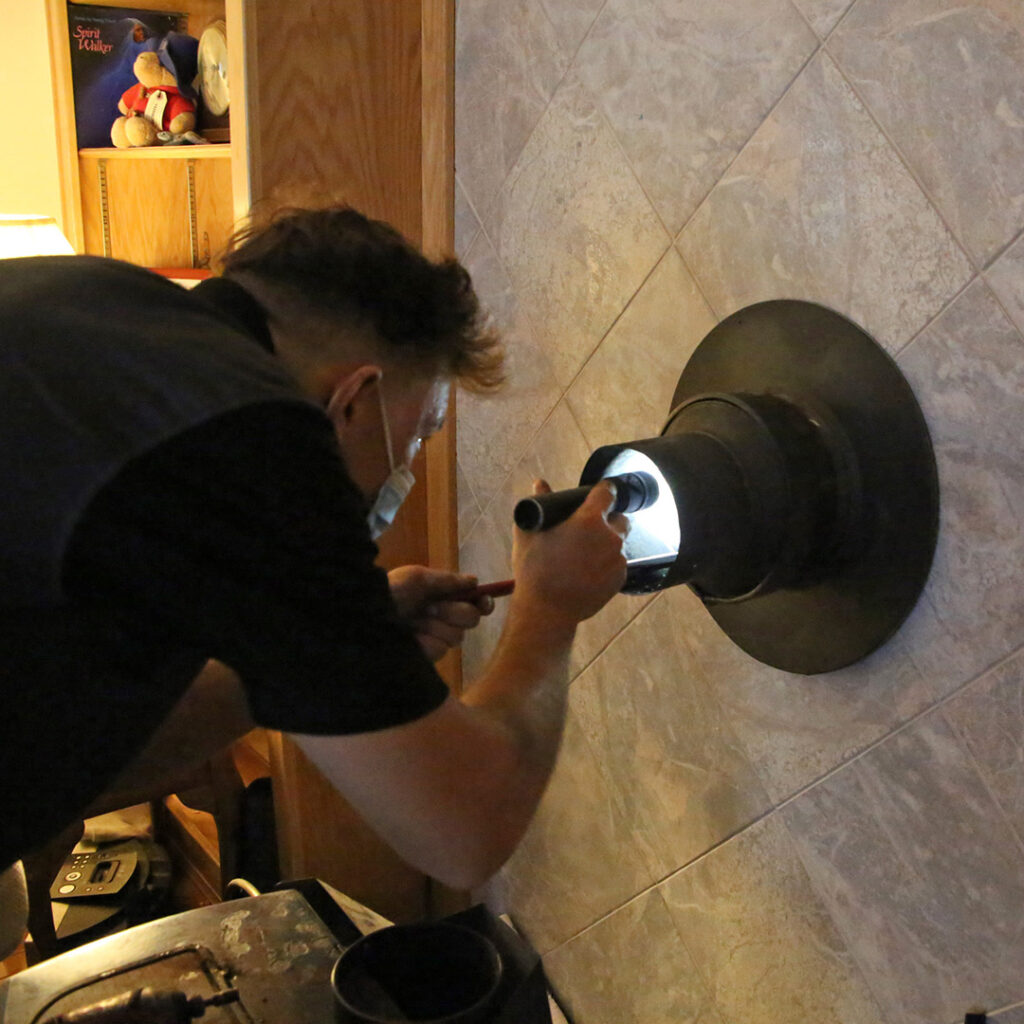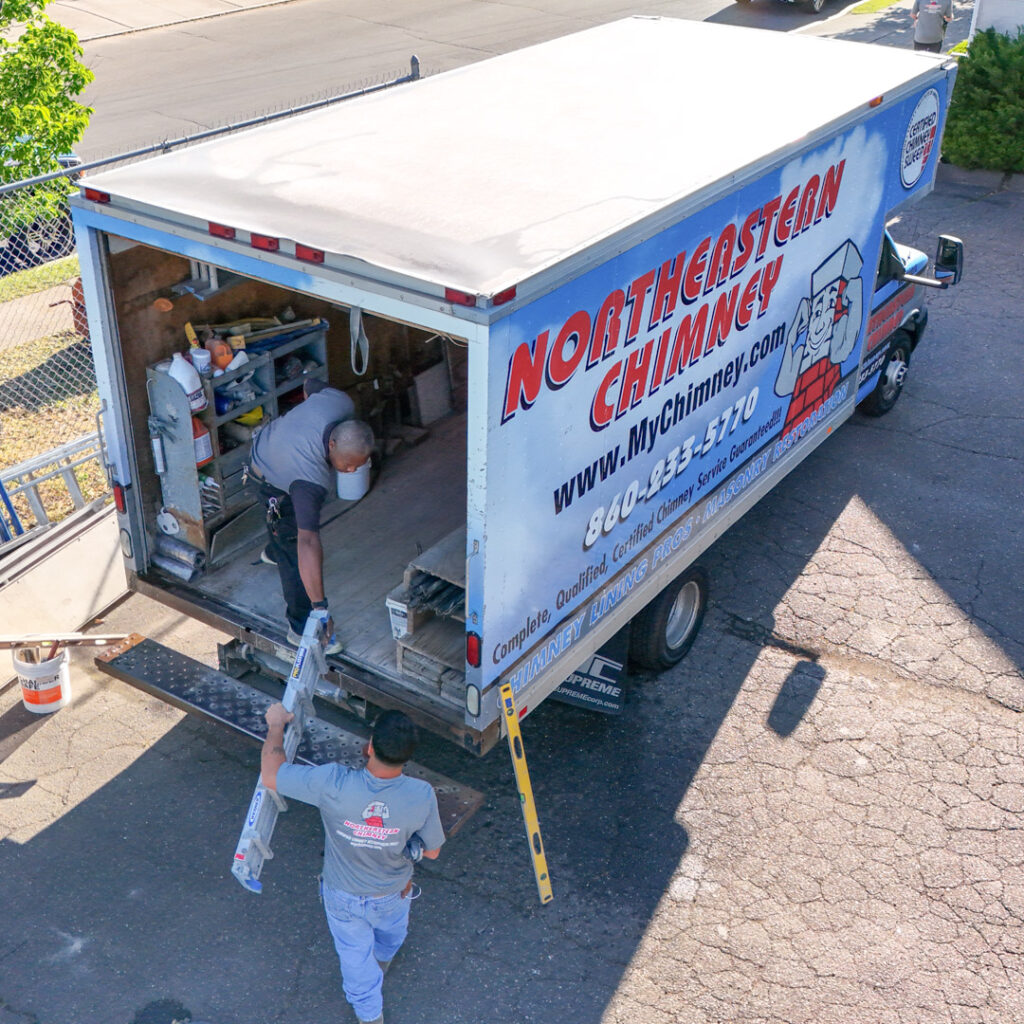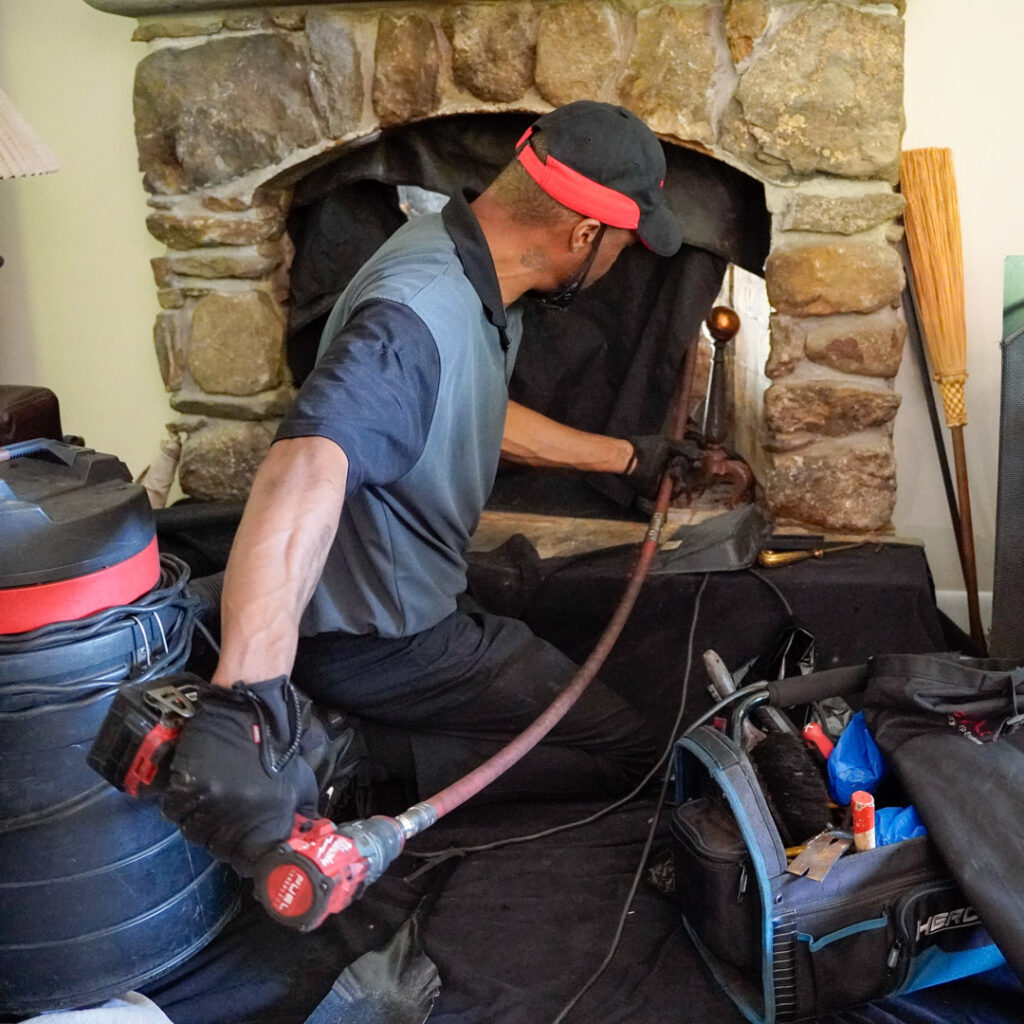Before you light that first log, it’s important that your fireplace is fully operational and up to code. At Southern Chimneys in Atlanta, we’ve helped many ATL homeowners get their chimneys ready for winter.
Here’s a simplified,8 step guide to make sure your fireplace is clean, efficient, and winter ready from the chimney experts at Southern Chimney.
Schedule Your Chimney Cleaning – Get a Free Inspection
1. Schedule a Chimney Inspection (Before Everyone Else Does)
The holidays might be weeks away, but fall is the busiest season for our chimney services. Inspection schedules at Southern Chimney can fill up fast,especially once the temperature drops.
But, why does a regularly scheduled chimney inspection matter if it’s only used a few times out of the year? When a fireplace sits for a prolonged period of time during the warmer months, it is still exposed to rain, pests, and overall wear.
At a minimum, the National Fire Protection Association (NFPA) recommends an annual chimney inspection. Our Southern Chimney team offers CSIA-certified Level 1 and Level 2 inspections based on your needs:
- CSIA-Certified Level 1: For chimneys with no changes or problems
- CSIA-Certified Level 2: Required if you’ve had a property sale, appliance change, or recent storm damage
Southern Chimney pro tip: Booking in early fall gives you the best shot at getting any needed repairs done before Thanksgiving or Christmas.
2. Clean the Flue and Clear the Airflow
Creosote buildup is more than just soot,it’s also concentrated fuel that can reduce efficiency and can cause blockages. If left untreated, it can harden into glazed creosote that’s tough to remove and potentially dangerous when exposed to high heat.
Some signs of creosote buildup to keep an eye out for include:
- Strong, lingering fireplace odors throughout the house
- Difficulty starting a chimney fire
- Smoke backing into the room of the chimney
One main part of our chimney cleaning service at Southern Chimney is a mechanical sweeping and camera scopes to make sure your flue is draft-ready for winter. If your fireplace hasn’t been cleaned since last season, this is one of the most important steps you can take before holiday use.
3. Inspect the Damper for Cold Drafts
The damper plays a huge role in energy efficiency. When it’s open, it allows smoke and gases to vent properly. When it’s closed, it keeps your heated air from escaping up the flue.
If you feel cold drafts even when the fireplace is off, the damper may be:
- Stuck open
- Warped or rusted
- Not sealing tightly
Top-mount dampers, which sit at the top of the chimney instead of just above the firebox, provide a better seal and also act as a rain cap,reducing both energy loss and water entry.
4. Add a Chimney Cap if You Don’t Already Have One
Surprisingly, many Atlanta chimneys we inspect don’t have a cap at all. That means:
- Animals can nest inside the flue
- Rain can damage masonry and dampers
- Leaves and debris can clog airflow
Adding a cap is a simple fix that protects your chimney from all kinds of issues. It’s also one of the most cost-effective upgrades you can make to extend your system’s life. Additionally, not having a chimney cap on your Atlanta home’s chimney can increase the risk of a chimney fire. This can happen when a chimney is lit, and its embers or sparks land on your roof or nearby forests or woods.
5. Check Masonry for Cracks or Crumbling Mortar
Older homes around Atlanta, such as the homes in Atlanta’s historic neighborhoods, often show signs of chimney wear, such as:
- Loose bricks
- Cracks in the crown
- Gaps in mortar joints
- White staining (efflorescence)
These are early signs of water intrusion and freeze-thaw damage, which only get worse in cold weather. Our chimney team offers tuckpointing, chimney crown sealing, and waterproofing to restore structural integrity and prevent future problems.
6. Only Burn Seasoned Hardwood
Fireplace performance depends heavily on the kind of wood you use. There are specific wood types to use in you chimney and ones to avoid for safety and overall function.
Wood to Burn in Chimney:
- Oak, maple, or other dense hardwoods
- Wood that’s been dried for at least 6-12 months
- Logs with moisture content under 20%
Wood to Avoid in Chimeny:
- Softwoods like pine (high sap = more creosote)
- Green or wet wood (leads to smoky fires and fast creosote buildup)
Store firewood in a dry, covered area with good air circulation. Avoid stacking logs directly against the house or garage.
7. Holiday Chimney Decor Tips: Make It Festive, Not Risky
We love a good garland or string of lights as much as the neighbors, but holiday decorating around the fireplace requires a little extra care. If you do want to spruce up your chimney, whether thats ont the inside for holiday party, or on the outside to complete your holiday look here are some safety tips to keep in mind:
Do:
- Use flame-resistant or flame-retardant decorations
- Keep stockings and garlands off the mantel when the fireplace is in use
- Position trees and wrapped presents away from the hearth
- Water live trees daily to prevent drying out
Don’t:
- Burn wrapping paper or boxes in the fire (they burn too fast and too hot)
- Overload extension cords or light strings
- Leave anything flammable near the fire overnight
8. Double-Check Your Smoke and CO Detectors
Your fireplace might look and feel perfect, but gas buildup or poor ventilation can create hidden risks.
Every home with a wood-burning or gas fireplace should have:
- Smoke detectors outside every sleeping area and on each floor
- Carbon monoxide detectors in the same locations
Test them monthly and replace units every 7–10 years. If your fireplace hasn’t been inspected in a while, now’s the time to confirm it’s venting properly—and that your detectors are working as a final line of defense.
Holiday and Winter Fireplace Readiness Checklist From Chimney Experts
Here’s a quick recap of what to cover before you strike that match:
- Schedule a chimney inspection with our team
- Safely inspect the outside of your chimney (from the ground) for any missing bicks, pieces, or a loose chimney cap
- Connect with a chimney expert for any brick, mortar, or crown damage repairs
- Stock up on seasoned hardwood
- Keep decor and trees away from open flames
- Test your smoke and carbon monoxide detectors
Make Your Atlanta Chimney Holiday and Winter Ready with Southern Chimney
Southern Chimneys is your go-to partner for fireplace and chimney prep in the Atlanta metro area. Whether your system is historic or newly installed, our CSIA-certified team will help ensure your chimney is clean, clear, and functioning properly – just in time for holiday season and hosting.
Call or schedule online today and let’s get your Atlanta fireplace ready for another season of warm, glowing memories.
This post first appeared on https://southernchimneys.com


 The Benefits of Switching from Gas to Wood
The Benefits of Switching from Gas to Wood
 Reduce chimney fires.
Reduce chimney fires.  Professionals suggest that an annual Chimney sweep and inspection be conducted. When a problem arises, the best plan is to tackle it as soon as possible. This will cost you much less than if you let the damage to the fireplace and bricks go on too long.
Professionals suggest that an annual Chimney sweep and inspection be conducted. When a problem arises, the best plan is to tackle it as soon as possible. This will cost you much less than if you let the damage to the fireplace and bricks go on too long.
 Contact Northeastern Chimney for more information about HeatShield.
Contact Northeastern Chimney for more information about HeatShield.

